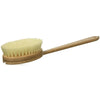New Evidence: Rapid Aging at Certain Life Stages

Do we age in a steady progression throughout life, or in fits and spurts? Many studies have focused on the progression of aging as a linear event throughout the lifespan. However, few studies have examined whether there are periods of either slower or more rapid aging, and which metabolic processes are involved in each.
One recent study, published in August 2024, tracked the molecular markers of aging in 108 Californians over a period of 1.7 years (1). They found that major molecular changes and signs of dysregulation occurred at two critical ages, around age 44, and age 60. Each period of acceleration was associated with dysfunction in different pathways. For the 44-year phase, the metabolism of lipids and alcohol became most problematic, leading to higher cardiovascular disease. With the 60-year phase of rapid aging, the disfunction occurred in the immune system, and the metabolism of carbohydrates, likely due to the depletion of enzymes and production of other antioxidants involved in reducing the damage from carbohydrates.
Some researchers have used methylation intensity as one of the biomarkers, and discovered that women have more rapid aging in their 30s, and then again in their 50s (2). Overall, the researchers identified four areas of biological dysfunction associated with aging: hormone regulation, lipid metabolism, tissue fitness, and chronic inflammation.
Other studies have focused on autophagy, which is induced by damaged cellular proteins and organelles, DNA damage, or nutrient depletion (3). It was not discovered until 2003 that autophagy was associated with longevity and aging processes. Later studies confirmed that conserving autophagy improved lifespan and reduced the effects of aging.
One of the most important types of authophagy for our immune system is called selective macroautophagy which contributes to turnover of organelles and to protection against external pathogens by eliminating:
- Protein tangles / aggregates (aggrephagy),
- Bacteria and viruses (xenophagy) or zymogen granules (zymophagy)
- Glycogen (glycophagy),
- Lipid droplets (lipophagy),
- Lysosomes (lysophagy),
- Mitochondria (mitophagy),
- Peroxisomes and ribosomes (ribophagy),
- Nucleic acids (RN/DNautophagy) (3).
Natural Compounds to Boost Autophagy
Induction of autophagy through the use of natural substances can help the body significantly in its defense against aging processes, including diseases like arthritis, cancer, and nutrient deficiency. Periods of accelerated aging, occurring in the mid 30s to mid 40s, and again in the mid 50s to 60s, can be met with individualized protocols. Since we know that alcohol and fat metabolism becomes more difficult first, the detoxification pathways that improve the removal of damaged fats and their by-products should be targeted by nutritional therapy. Here are the top supplements that show promise for improving markers of aging and disease, and help induce autophagy of cancer cells:
1. Curcumin (turmeric)
This yellow pigment from turmeric has been found to have many bioactive properties, including apoptosis induction in cancer cells and autophagy in glioblastoma and glioma cancer cells in vivo (7). In addition, it is an antimicrobial, antioxidant, antiprotozoal, anti-tumor, and immunomodulatory compound.
2. Amla
Generally high in vitamin C, Amla berry and its extract have high bioactivity. Amla inhibits ovarian cancer (OC) cell growth in vitro and in vivo, possibly via inhibition of angiogenesis and activation of autophagy. It functions as a potent antioxidant, protecting the body from liver damage, radiation, cytotoxicity, and hypolipidemia (6). It also lowers cholesterol.
3. ALA
Alpha lipoic acid (LA) inhibits O (6)-methylguanine-DNA methyltransferase (MGMT) and induces autophagy (5).
Products
Dr. Clark Store: Turmeric
Dr. Clark Store: Alpha Lipoic Acid (ALA)
Himalaya: Amla Berry Extract
References
1. https://www.nature.com/articles/s43587-024-00692-2
- https://www.sciencedirect.com/science/article/pii/S2666634023001976
- Kaushik, S., Tasset, I., Arias, E., Pampliega, O., Wong, E., Martinez-Vicente, M., & Cuervo, A. M. (2021). Autophagy and the hallmarks of aging. Ageing research reviews, 72, 101468.
- Lin, S. R., Fu, Y. S., Tsai, M. J., Cheng, H., & Weng, C. F. (2017). Natural compounds from herbs that can potentially execute as autophagy inducers for cancer therapy. International Journal of Molecular Sciences, 18(7), 1412.
- Goder, A.; Nagel, G.; Kraus, A.; Dorsam, B.; Seiwert, N.; Kaina, B.; Fahrer, J. Lipoic acid inhibits the DNA repair protein O6-methylguanine-DNA methyltransferase (MGMT) and triggers its depletion in colorectal cancer cells with concomitant autophagy induction. Carcinogenesis 2015, 36, 817–831
- Chen TS, Liou SY, Chang YL. Supplementation of Emblica officinalis (Amla) extract reduces oxidative stress in uremic patients. Am J Chin Med. 2009;37(1):19-25.
- Zhuang, W.; Long, L.; Zheng, B.; Ji, W.; Yang, N.; Zhang, Q.; Liang, Z. Curcumin promotes differentiation of glioma-initiating cells by inducing autophagy. Cancer Sci. 2012, 103, 684–690.

September 27, 2025
Immune Supplements: Top 10 Best Supplements to Boost Immunity
Are you looking for effective ways to enhance your body’s natural defense? Immune supplements have become popular choices to support the immune system booster function, especially in times of increased illness risk. With so many products...
Read more
September 27, 2025
Cell Phone and WiFi Safety: How to Prevent and Treat EMF Damage and Electrosensitivity
Electrohypersensitivity (EHS), often called electrosensitivity, has been a polarizing and increasingly relevant issue over the past decade and a half. Since the number of people identifying with these symptoms continues to grow exponent...
Read more
September 27, 2025
Raw Carrots: Nature’s Antibacterial & Antiseptic Food
For most of us, carrots are simply a crunchy snack or a source of vitamin A. But according to researcher Ray Peat, PhD, raw carrots offer something more unusual: they act as a kind of natural antiseptic inside the gut, helping to contro...
Read more




Leave a comment